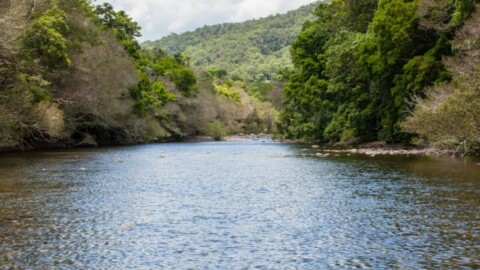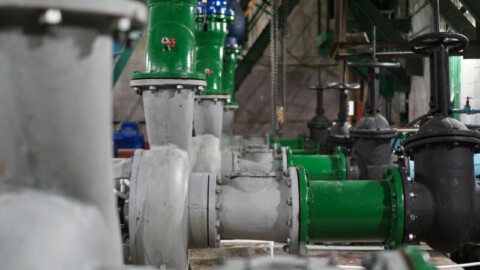The first projects being funded under the Australian Government’s $150 million commitment to improve the disaster resilience of the Northern Rivers region have been announced, including over $18 million for new and upgraded pumps and pump stations.
Part of Phase 1 of the Northern Rivers Resilience Initiative, the 16 projects were recommended by CSIRO following extensive community consultation, and agreed by the Federal and New South Wales Governments. They deliver on 41 individual project proposals put forward to CSIRO through their review process, with the scope of some proposals expanded to provide benefits across the entire Northern Rivers Region.
The announcement enables work to commence in the first tranche of projects while the New South Wales Government continues a due diligence review of the remaining recommended projects. All projects to be funded from the $150 million will be confirmed within the next six months.
The Tranche 1 projects, totalling $50 million, include $17.2 million for seven combined upgrades to pumps and pump stations in Lismore, $1.1 million for a new pump system to assist in draining East Murwillumbah, and $470,000 to install box culverts through a river bank levee to improve local drainage in Grafton.
Region-wide programs to increase flood risk awareness will benefit all seven regions, delivering floor level surveys, assessing evacuation routes and options for infrastructure upgrades and establishing community-led resilience teams.
Many of the projects align with recommendations from the NSW Flood Inquiry, and with local floodplain risk mitigation programs. All seven local government areas of the Northern Rivers region – Ballina, Byron, Clarence Valley, Kyogle, Lismore, Richmond Valley and Tweed – will benefit.
Federal Minister for Emergency Management, Murray Watt, said the recovery of the Northern Rivers region following last year’s devastating and destructive floods will continue for quite some time.
“For many people the events of last year are still very raw, with the upcoming anniversary bringing into sharp focus what they’ve been through and what they’re still going through,” Mr Watt said.
“The Albanese Government remains with the people of the Northern Rivers on this recovery and today’s announcement of projects funded under the Northern Rivers Resilience Initiative builds on the billions of dollars in assistance dedicated to the region.
“As previously announced, $150 million has been set aside for projects that local communities told us are a solid first step in improving the region’s resilience to future disasters.
“This money will be signed over to the NSW Government to manage the agreed projects and I’ve asked that this first tranche of projects commence implementation as soon as feasible.”
New South Wales Deputy Premier and Minister for Regional NSW, Paul Toole, said the State Government welcomes the Australian Government’s announcement of funding for these important projects.
“The successful projects align with the recommendations from the Independent NSW Flood Inquiry and play an important role in improving flood preparedness and flood resilience across Northern Rivers communities.
“With the funding secured, we look forwarding to work starting. The NSW Reconstruction Authority will manage the program administration and governance, and the Northern Rivers Reconstruction Corporation (NRRC) will be responsible for coordination and delivery of on-ground works.”
The NSW Reconstruction Authority and Northern Rivers Reconstruction Corporation (NRRC) will continue to undertake due diligence for the remaining $100 million of projects, including larger infrastructure projects requiring further engineering assessment to determine feasibility.
The CSIRO study that informed the allocation of the funding, and details of the first tranche of projects, are available at Northern Rivers Resilience Initiative | National Emergency Management Agency (nema.gov.au)
CSIRO is now preparing to undertake the second phase of the Northern Rivers Resilience Initiative. This larger project will collect suitable data and construct a whole of catchment model for the Richmond River to inform longer-term flood mitigation measures. The final report from this phase will be delivered in November 2024.



















